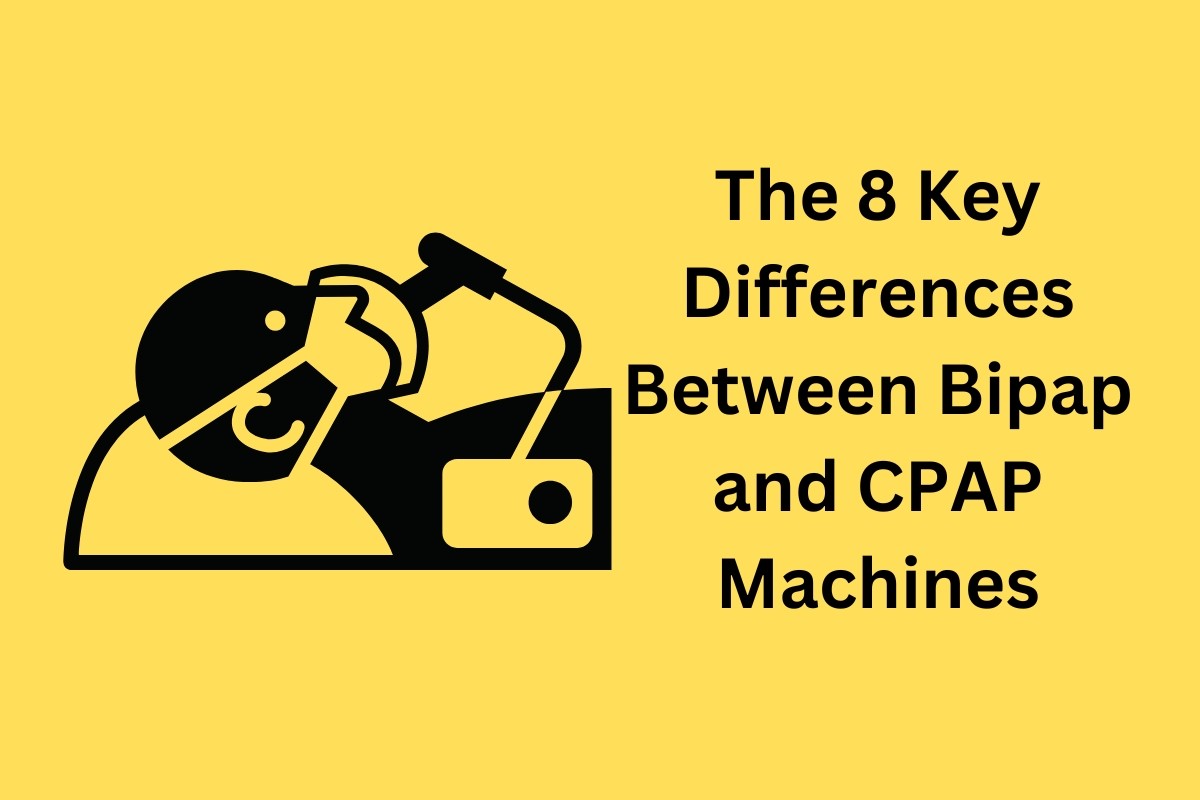If you are considering using a Bipap or CPAP machine for your sleep apnea, it is important to understand the key differences between the two devices. In this blog post, we will explore the eight main differences between Bipap and CPAP machines and how they can affect your treatment. Knowing the difference between Bipap and CPAP machines will help you make an informed decision when it comes to choosing the right device for your needs. The 8 Key Differences Between BiPAP and CPAP Machines. Need CPAP Machine buy now.
1) CPAP is for continuous positive airway pressure
Continuous Positive Airway Pressure, or CPAP, is a form of therapy use to assist in the treatment of sleep apnea and other breathing issues. The CPAP machine works by continuously supplying the patient’s airways with pressured air, keeping them open so they can breathe normally. This aids in preventing breathing pauses, or apneas, while patients are asleep. It is the most popular kind of therapy for sleep apnea and the main distinction between BIPAP and CPAP equipment. CPAP devices may be configured to give various pressure levels according on the patient’s need.
2) BiPAP is for two levels of pressure
One of the main distinctions between CPAP and BiPAP machines is this. BiPAP machines produce two distinct levels of pressure: a greater pressure while breathing and a lower pressure when expelling, as opposed to CPAP machines, which deliver a continuous positive airway pressure. This makes it simpler for them to breathe and gives them greater control over how much pressure they are expose to.
3) CPAP can be use with a humidifier
A humidifier option is available as an add-on component with CPAP devices. The CPAP user’s air is made more humid by the humidifier. This lessens throat and nasal dryness, which can be uncomfortable when operating the machine. Additionally, it lessens snoring, nasal congestion, and other sleep apnea symptoms. Every morning, the humidifier should be replenish with distilled water to guarantee that it is producing the ideal humidity levels.
4) BiPAP may be use with or without a humidifier
Users of BiPAP equipment can change the humidity setting on their device to suit their preferences. This function is fantastic for anyone who could experience dry mouth or clogged airways since it keeps the airways wet. To add to your comfort while utilizing a BiPAP with a humidifier, you may also change the temperature and moisture content. If you choose not to use a humidifier, you can still benefit from BiPAP therapy by simply turning off the humidification option on the machine.
5) CPAP machines are smaller
In general, CPAP devices are smaller and lighter than BiPAP devices. They are often composed of lightweight plastics, which makes them portable. This is perfect for those who frequently need to relocate their machine from one location to another. Because of their smaller footprints, CPAP devices don’t take up as much room. Some CPAP devices may even be roll up and put in a bag, making it simple for you to take your machine with you.
Additionally, CPAP devices are often less expensive than BiPAP devices. They need less energy to run since they are smaller, which lowers the cost of ownership. This can be a huge help to folks who need CPAP therapy but are on a tight budget.
When it comes to convenience and portability, CPAP machines are a great choice. Their small size makes them ideal for travel and easy to transport, while their affordability makes them an attractive option for those with budget constraints.
6) BiPAP machines have a back-up battery
BiPAP machines include a backup battery, which is one of its main advantages over CPAP devices. For people who travel, this is advantageous since it enables them to bring their machine along without worrying about finding a power supply. Four hours is the maximum battery life, which is sufficient for many individuals to obtain a decent night’s rest. Additionally, the battery will start up to keep the device working in case of a power loss, ensuring that the user may continue to receive their required amount of oxygen. Because of this function, BiPAP users have more confidence that they can trust on their equipment at all times.
7) CPAP is good for one person
CPAP devices are intend for those with sleep apnea, a disease in which the airway becomes block while you are asleep. A patient can breathe more readily because to the constant airflow provided by CPAP devices, which maintain the airway open. The settings of CPAP machines may be change to deliver the best relief because they are made to be used by just one person at a time. The mask and helmet that come with the machine are made to match the face shape and size of one specific person, thus they might not fit correctly if use by someone else. CPAP devices are smaller and lighter than BiPAP machines since they are made for a single user. The 8 Key Differences Between BiPAP and CPAP Machines.
8) BiPAP is good for two people
Two persons can utilize BiPAP machines together. Both persons can breathe more readily since they are able to apply two distinct pressure levels. This is especially advantageous for couples with dissimilar demands. For instance, one partner can need more pressure while the other might need less. Both can get the pressure that is most comfortable with BiPAP.
Additionally, BiPAP provides both users with a backup power source. The device will automatically switch to battery power in the case of a power outage. Ensuring that both partners continue to get the necessary airway pressure.
BiPAP devices are moreover often bigger than CPAP machines, making it more comfortable for two individuals to utilize them simultaneously. This makes it possible for both lovers to rest soundly in the same bed.
Overall, BiPAP devices have a lot to offer couples who require various airway pressures while they sleep. For couples who wish to benefit the most from their CPAP therapy, it’s a fantastic solution.
Conclusion
When it comes to breathing treatments, then you should take advice from your health care provider. CPAP and BiPAP are two of the most popular machines. While they share some similarities, they have many differences that make them better suited for different types of patients. CPAP is ideal for single patient use, while BiPAP is great for two people or those with more complicated breathing needs. Ultimately, which machine you choose will depend on your individual needs and lifestyle. With the right information and support, you can make the best decision for yourself and your health. In this article we learn about The 8 Key Differences Between BiPAP and CPAP Machines.








